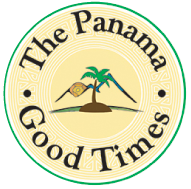
17 Oct CHIRIQUI, A NATURAL ADVENTURE
The province of Chiriqui is located on the western side of Panama, bordering with the province of Bocas del Toro province, Veraguas, the Ngäbe-Buglé region, Puntarenas (in the Republic of Costa Rica) and the Pacific Ocean. This province extends along the Pacific coast and houses mangroves, islands and islets covered by lush vegetation with hidden beaches. Within its territory there are several mountains, as well as the highest peaks in the country, fertile valleys and fields where very friendly settlers reside.
It is believed that the name of “Chiriquí” comes from an indigenous word that means “valley of the moon and land of great waters.” Before the arrival of the Spanish colonizers, the area was inhabited by several tribes, all of them grouped under the name of Guaymíes, currently known as Ngöbe-Buglé, who defended their lands with great courage. The Gulf of Chiriqui, one of the best kept secrets in Panama, is a fundamental part of the National Marine Park, which is also famous for its remote and lonely white sand beaches, surrounded by crystal clear waters where you can swim between multiple tropical fish.
Boquete is the best-known area, hidden among the mountains of Chiriqui and located at the foot of the Baru Volcano in a panoramic position, with splendid flowery gardens and great wildlife. Coffee plantations and citrus cultivation are rooted on the slopes of the mountains. This is the starting point for walks, excursions and hiking trails in primary and secondary forests, where the branches of the trees are covered with moss and enthusiasts birders arrive from all over the world in search of Mesoamerican Quetzals, considered the sacred birds of Mayas due to their splendid emerald green plumage.
From the summit of the Baru National Park, the highest mountain in the country, it is possible to observe both the Caribbean Sea and Pacific Ocean on clear days. In addition, La Amistad International Park, which is a territory shared with Costa Rica and declared by UNESCO as a World Heritage Site, is part of the largest Mesoamerican biological corridor.



